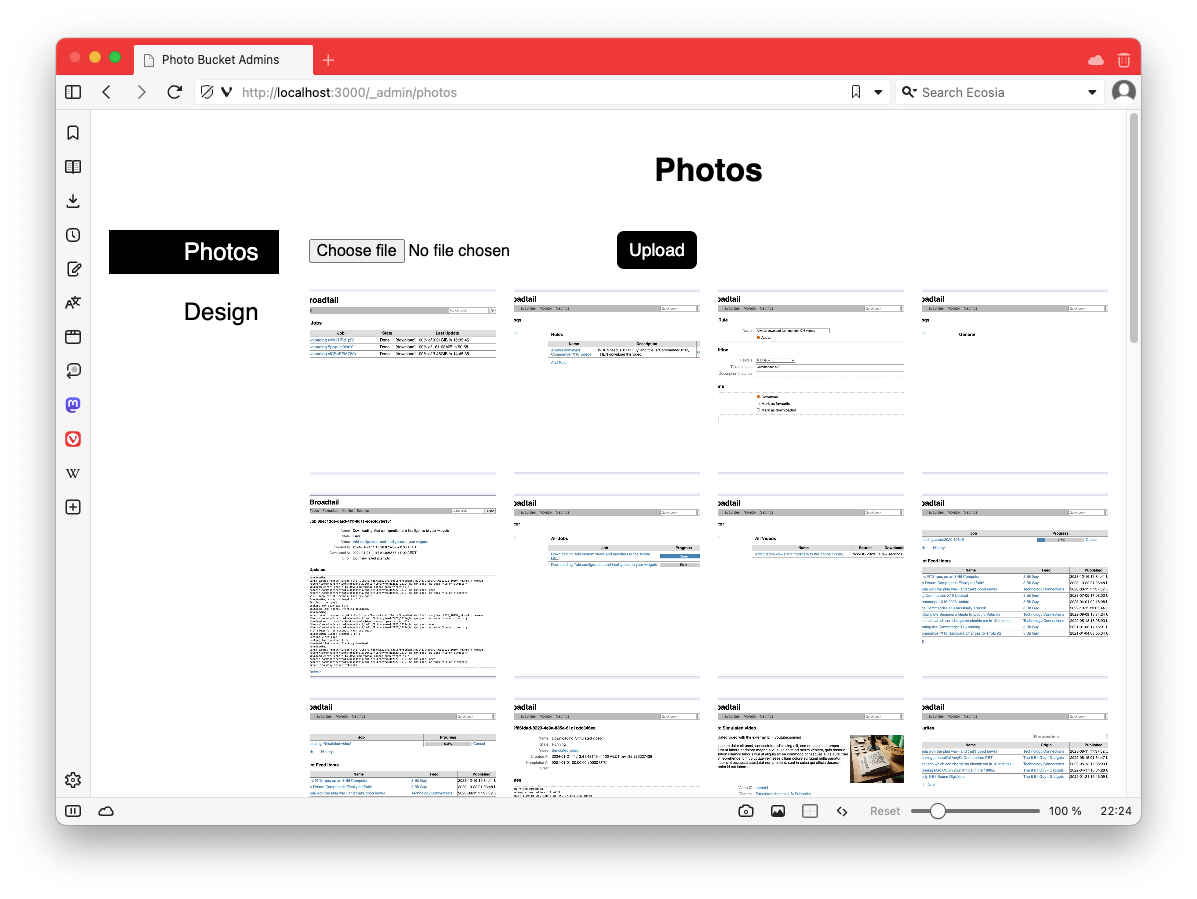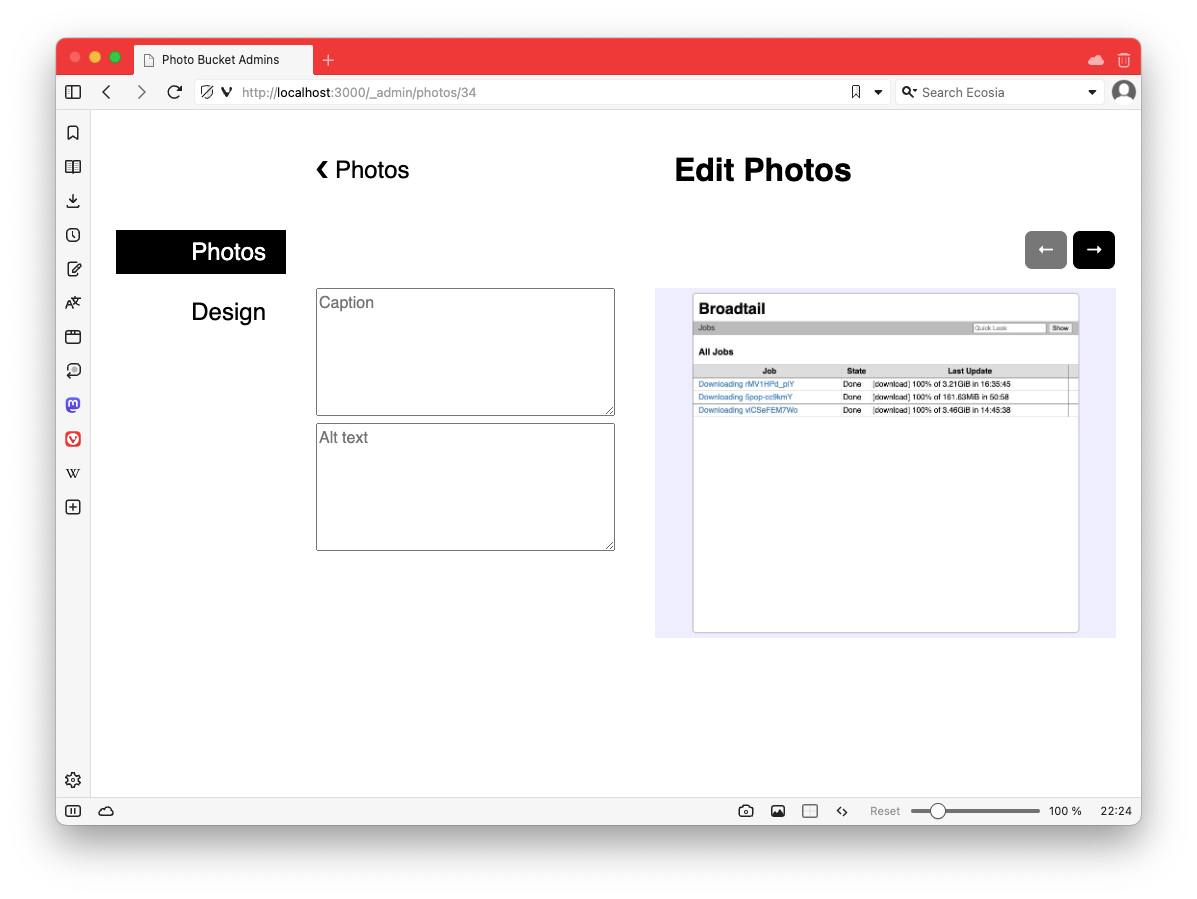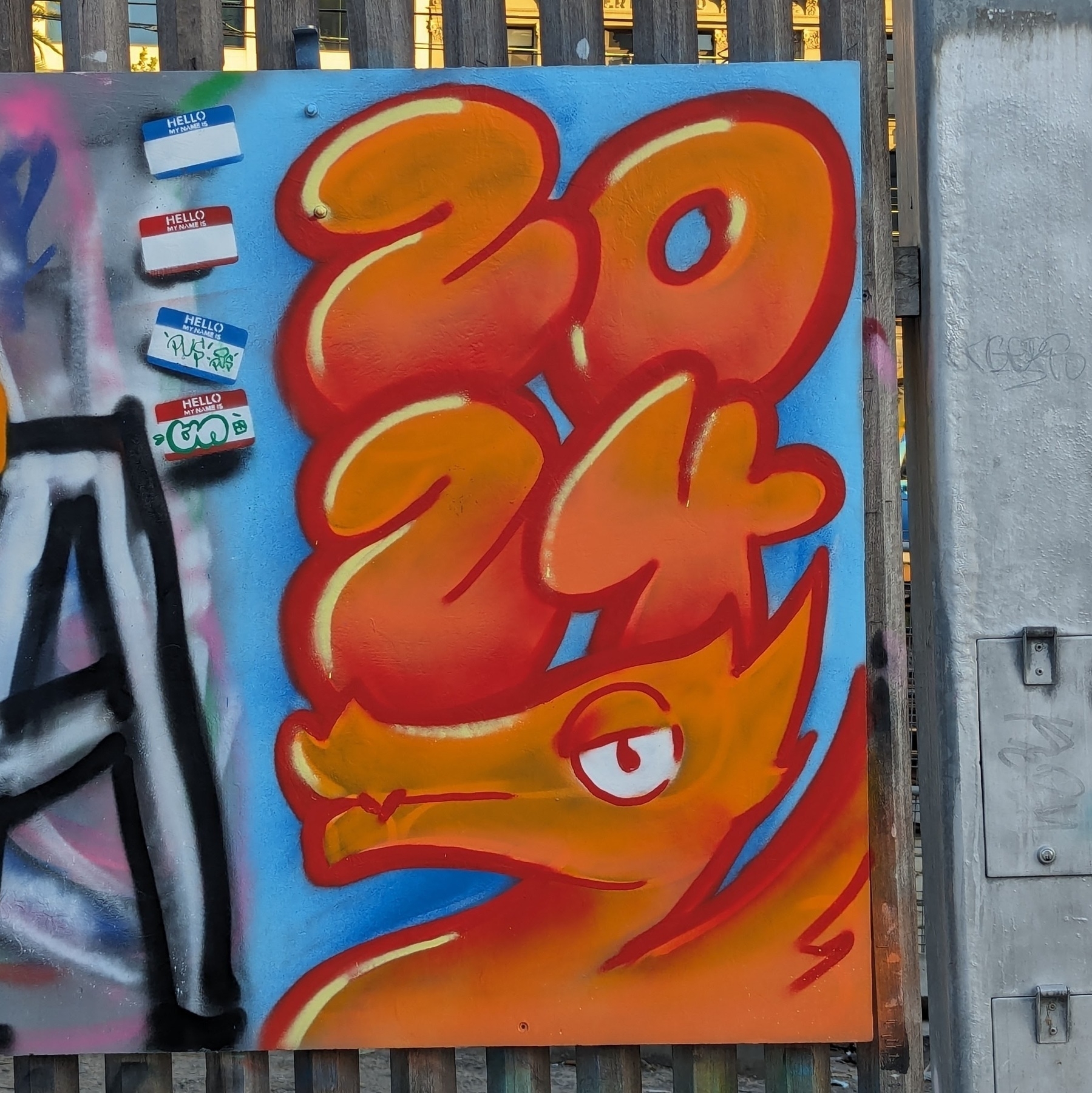-
Complexity Stays At the Office
It’s interesting to hear what others like to look at during their spare time, like setting up Temporal clusters or looking at frontend frameworks built atop five other frameworks built on React. I guess the thinking is that since we use it for our jobs, it’s helpful to keep abreast of these technologies. Not me. Not any more. Back in the day I may have though similar. I may even have had a passing fancy at stuff like this, revelling in its complexity with the misguided assumption that it’ll equal power (well, to be fair, it would equal leverage). Continue reading →
-
Bought some “genuine” EarPods as emergency headphones I can keep in my bag. Wired earbuds are not my preferred listening device. Well, at least they’ll act as a deterrent from forgetting my headphones again.

-
Well, it’s finally happened. I’ve left for work without my headphones. 🙁
-
Worse Is Better
Gabz latest post about ChatGPT’s ability to write “good” reviews gave me pause: Here is the thing, every now and then I write about things that I like, among them, video games. I am also aware that although I am not a professional reviewer, I’d like my posts to come across with a certain level of, I don’t know, some quality/standards/mission/quest. […] Whenever I write a post about something I liked it is in a very unprofessional manner, or informal manner, rather, as if I was just talking to you. Continue reading →
-
Photo Bucket Galleries and Using the HTML Popover API
Spent a bit more on Photo Bucket this evening. Tonight I started working on galleries, which’ll work more or less like albums. At the moment you can create a gallery and add a photo to it. Most of the work so far has been backend so the UI is pretty rough. Eventually you’ll be able to do things like rearrange photos within galleries, but for the moment they’ll just be added to the end. Continue reading →
-
Yep, I think 22 minutes at 150°C works for toasting frozen hot cross buns in a cold oven. Toasty and warm without being burnt or too hot to eat. Might even be able to push it to 23 minutes but I probably wouldn’t go higher than 25.
-
I kinda wish there was a fan edit of Mad Men that condensed all 7 seasons into one that contain only the avertising aspets of the show. All the domestic, love interest, personal flashbacks, etc. aspects — unless they relate directly to the advertisement plot lines — I can probably live without.
-
Message Simulator Client
Years: 2017 — 2020 Status: Gone I once worked at a company that was responsible for sending SMS messages via an API. Think one time passwords when you log into websites, before time-based OTP apps were a thing. And yeah, this did involve some “marketing” messages, although we were pretty strict about outright spam or phishing messages. Anyway, since sending messages costed us money, we had a simulator setup in our non-prod environments which we used for testing. Continue reading →
-
Photo Bucket lives, at least in an alpha state. It’s being used for the Folio Red Gallery, which would eventually consist of project screenshots that didn’t make it into the posts themselves. It looks ugly, and there are pretty large feature gaps, but it’s finally serving images.
-
Lost Album, Found
For the past 3.5 years, I’ve been searching on and off for a particular album: the original soundtrack to the David Attenborough series The Private Life of Plants. This lost album was quite elusive. It wasn’t on any of streaming services, and I couldn’t find a digital copy to buy. The only place I found that had anything was some defunct online music store, archived by the Wayback Machine, that offered a handful of tracks to download. Continue reading →
-
Another attempt at working out how best to heat up hot cross buns from the freezer in a cold oven. Tried 150°C for 20 minutes. It’s better. I think it’s pretty close. But still not warm enough. Maybe 22 minutes next time.
-
Holding pattern.

-
Implicit Imports To Load Go Database Drivers Considered Annoying (By Me)
I wish Go’s approach to loading database drivers didn’t involve implicitly importing them as packages. At least that way, package authors would be more likely to get the driver from the caller, rather than load a driver themselves. I’ve been bitten by this recently, twice. I’m using a GitHub Linux driver to build an ARM version of something that needs to use SQLite. As far as I can tell, it’s not possible to build an ARM binary with CGO enabled with these runners (at-least, not without installing a bunch of dependencies — I’m not that desperate yet). Continue reading →
-
Deciding where data files should be placed on a Linux system. It’s a bit strange how
/var/libwas chosen for this, instead of something like/var/local. I would’ve thought that’d make more sense, much like how binaries are placed in/usr/local. -
Shows how much of a romantic I am: it took a 10 minute tram ride before I realised why so many people were carrying flowers. 💐
-
Via A Learning a Day by Rohan. It resonated with me as well.
-
Spent some time this evening working on my image hosting tool. It’s slowly coming along, but wow do I suck at UI design (the “Edit Photo” screen needs some rebalancing).


-
It’s hot cross bun season again, and as always, I have to relearn how I heated them up last year. I thought the 15:150 rule would suffice: 15 minutes from frozen in an 150°C oven from cold. They were editable, but they weren’t warm enough for my taste. I’ll have to bump it up next time.
-
Back at Fitzroy Gardens for the PGBC Grand Final. Weather’s absolutely stunning. May even have a chance of winning this year. 🏆

-
For those who celebrate… 🐉🧧

-
For anyone else who has recently installed Vivaldi, and wants to get rid of the unnecessary padding around the address bar that seems to be the default now, this forum post worked a treat.
-
Safari, what the fudge do I need to do to get you to recognise that I go to Google Photos quite frequently, so as to stop you from deleting the authentication cookie? Having to constantly login is so unbelievably frustrating! 😡
-
Reading Greg Morris’s post about self-censoring on his own blog got me wondering why more blogging CMS’s don’t support private posts. Well, I guess I do know why: generally a blogging CMS is to make posts available on the open web. But for CMS’s that are geared towards individuals that just want a place to write, it seems like having the ability to publish a post that is only visible to yourself would be a nice feature. And yeah, I know there are some CMS’s that do support this, but it would be nice to see this on the newer ones that have been released.1
-
And no, drafts or “in review” posts don’t count; they need to be fully published posts, completely integrated into the timeline and nav that are otherwise hidden from public view. ↩︎
-
-
🔗 RS.S Joy
This was shared in the Hemispheric View Discord a few days ago. A lot of really good blogs listed (enrolled? As in blogroll?) there. I took a look at it yesterday and was just ducking in and out of blogs for ages.
-
Must say rebinding the keyboard shortcut for Keyboard’s Maestro’s Clipboard Picker has been quite successful. It’s definitely easier to remember and invoke, and I’m using the clipboard picker a lot more now than I was previously (which was never).